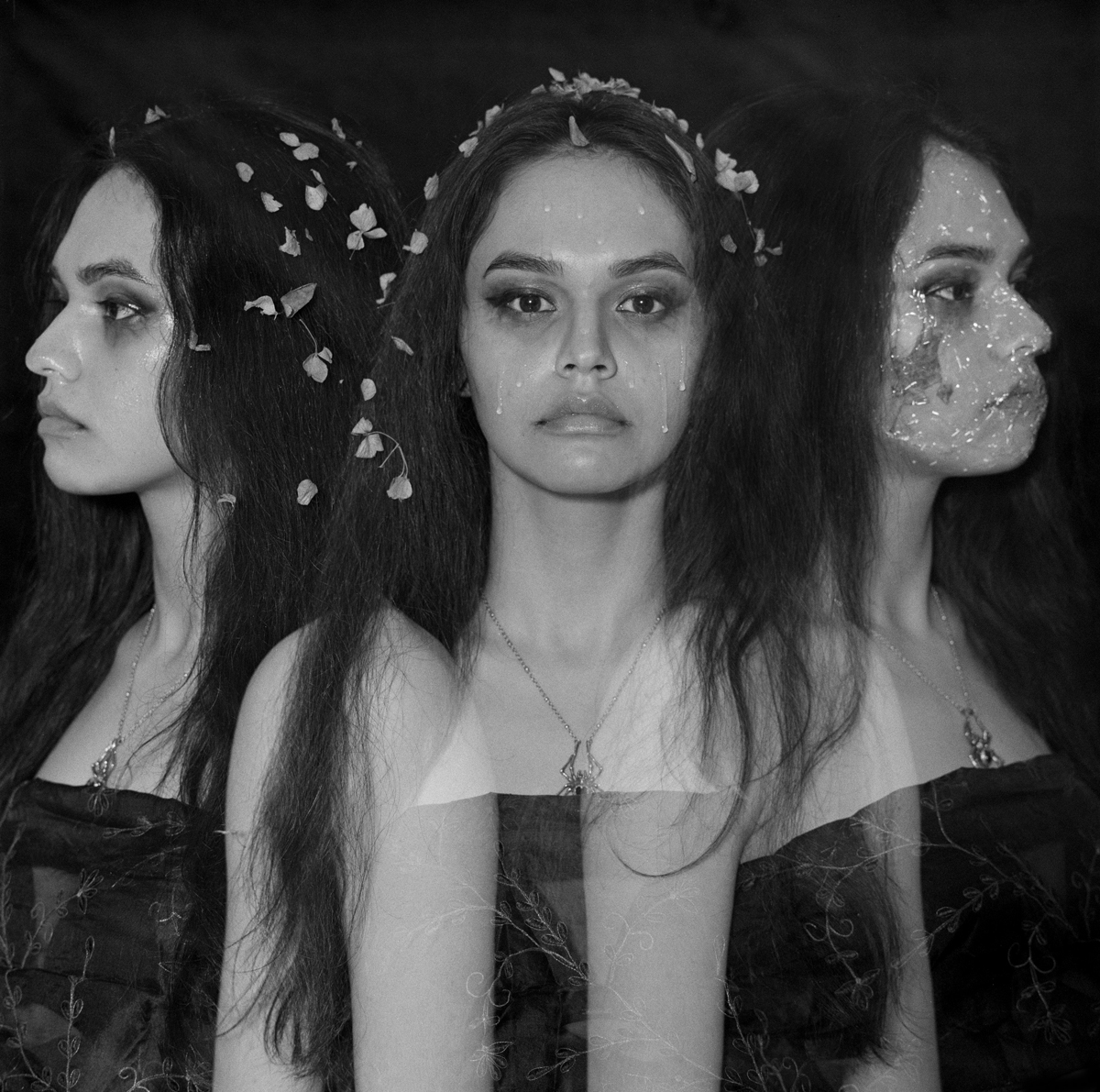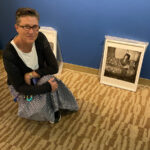How I Got This Picture - Kim Mimnaugh and Jess Martineau Posted On 7th February 2023 To Magazine & How I got this picture

There was a lot of interest in this shot when it was shared on our Instagram feed, so we asked Kim Mimnaugh & Jess Martineau to tell us a bit more about it.
Image Title
Water Goddess:Triple Exposure

Technical Info
Film Used
Format
120
Camera
Hasselblad 501 CM
Lens
150mm
Exposure time
3 exposures on one piece of film 1/60th at f8
Other equipment
Studio stand, sekonic flash meter, black velvet for the background Speedotron location lighting kit, one strobe set at 400 WS with a Soft Box
Location
Salem MA
Firstly, tell us the story behind this image. What inspired you to shoot it?
We had an idea to create a three-sided water goddess for a water conservation project. It was requested by a non-profit company that is focused on reducing carbon admissions. We created this triple exposure showing the three phases of water represented as vapor, liquid, and ice. The idea was inspired by the Greek goddess, Hecate, who was depicted in three phases of life.
Did you come across any challenges?
Making a triple exposure using a Hasselblad is extremely challenging. Just figuring out the amount of light needed to expose the film enough for each individual shot but not too much for the whole was a trial-and-error process. The first exposure is made by removing the slide on the film back and exposing but not cranking the film forward. To fool the camera, you must replace the film slide, take the back off the camera, and turn the film advance forward so that the mirror resets. Remembering not to crank the camera after shooting is difficult, we are so hard wired to immediately advance the film.
We did many test rolls and quick prints, mainly for positioning of the 3 sides of our model “Hecate”. The challenge comes when you move the model and then reposition them, you are estimating where they had been standing before. The overlap on the triple exposure had to be perfect so we spent a long time shooting and processing and then marking the floor when we were successful. Figuring out the proper exposure for exposing a single piece of film three times was also something that we would shoot and process to test. Some were too light some were too dark it was tricky to find the right amount of light to make a successful exposure. We also experimented with different kinds of film and film speeds but found the HP5+ to be the most robust film. It was able to withstand being exposed three times and not get too flat.
We marked the floor and had sight points for the model to position her feet and eyes. We also noticed that we needed perfect posture. I read somewhere if you put your arms by your side with your thumbs facing forward your body posture is perfect.
It was a challenge of showing vapor, water, and ice. Vapor was the hardest to show. We tried a clothes steamer, then tulle over her face and in the end just used spray mist. The ice is plastic wrap that worked well when the strobe lit it. The water droplets on her face are clear Elmer’s glue! It was very spontaneous coming up with what materials would show up in the final print.
What process did you use?
We set up in a studio with a black velvet backdrop and the Hassleblad was on a studio stand. The lighting was Speedotron location lighting kit, one strobe set at 400 WS with a Soft Box Exposure was 1/60 th of a second with the strobe set low because the film was being exposed three times.
How did you process it?
Hand processed using ILFOTEC DD-X
What about printing?
Printed full frame using an Omega Enlarger.
Processed with ILFORD Multigrade Paper Developer
Which paper did you use and what was your printing process?
About The Author

Kim Mimnaugh & Jess Martineau

Jess Martineau is a black and white film photographer, darkroom printer and part-time teacher who lives in Salem, Massachusetts.
Instagram – @maplesugarwitch

Kim Mimnaugh is a member of the Art + Design Department at Salem State University. She received her MFA in Photography from Massachusetts College Art and Design, Boston and her BA in Photography at Sam Houston State University, Texas.
Instagram – @Kim_mimnaugh






